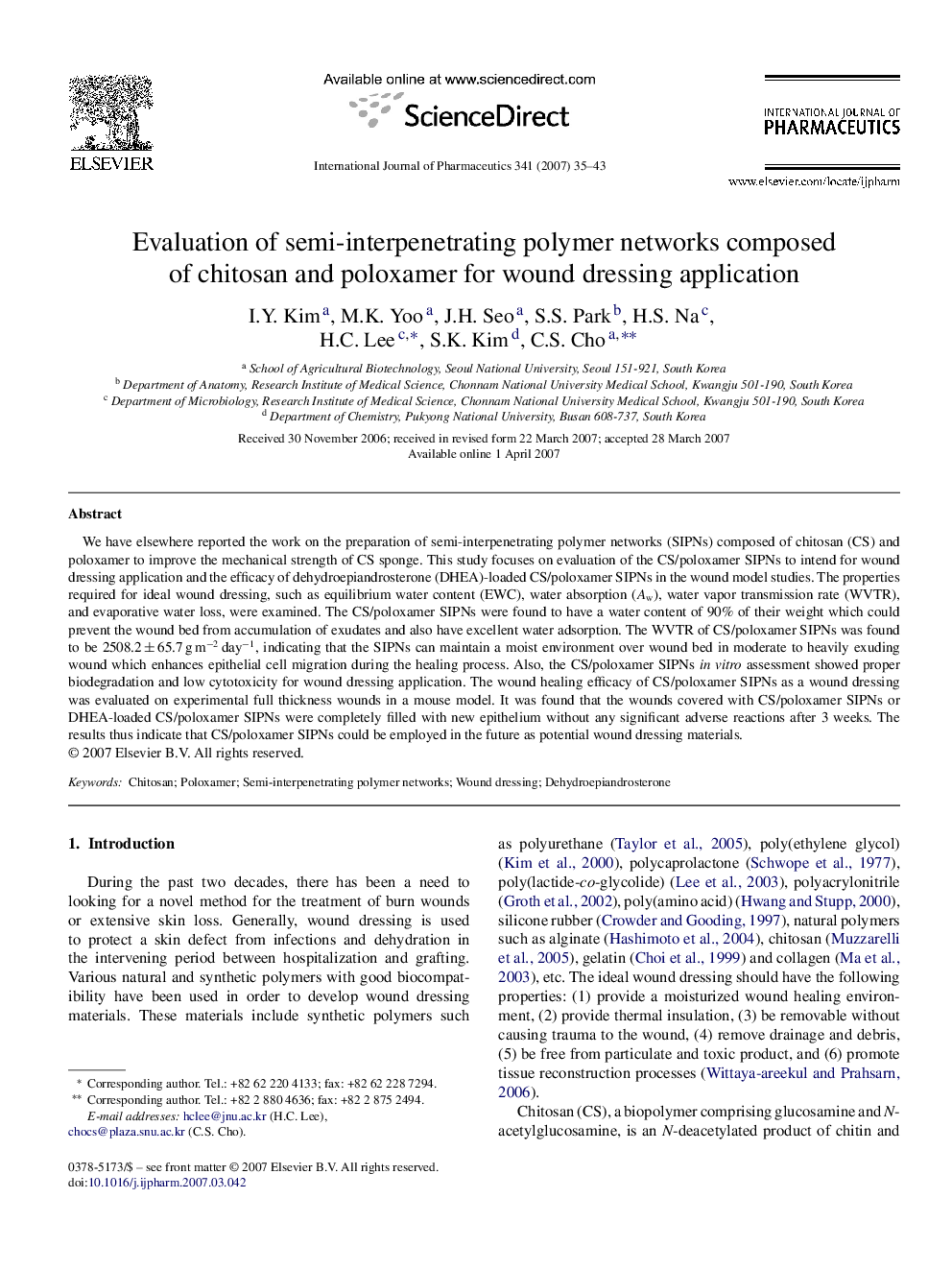| Article ID | Journal | Published Year | Pages | File Type |
|---|---|---|---|---|
| 2506043 | International Journal of Pharmaceutics | 2007 | 9 Pages |
We have elsewhere reported the work on the preparation of semi-interpenetrating polymer networks (SIPNs) composed of chitosan (CS) and poloxamer to improve the mechanical strength of CS sponge. This study focuses on evaluation of the CS/poloxamer SIPNs to intend for wound dressing application and the efficacy of dehydroepiandrosterone (DHEA)-loaded CS/poloxamer SIPNs in the wound model studies. The properties required for ideal wound dressing, such as equilibrium water content (EWC), water absorption (Aw), water vapor transmission rate (WVTR), and evaporative water loss, were examined. The CS/poloxamer SIPNs were found to have a water content of 90% of their weight which could prevent the wound bed from accumulation of exudates and also have excellent water adsorption. The WVTR of CS/poloxamer SIPNs was found to be 2508.2 ± 65.7 g m−2 day−1, indicating that the SIPNs can maintain a moist environment over wound bed in moderate to heavily exuding wound which enhances epithelial cell migration during the healing process. Also, the CS/poloxamer SIPNs in vitro assessment showed proper biodegradation and low cytotoxicity for wound dressing application. The wound healing efficacy of CS/poloxamer SIPNs as a wound dressing was evaluated on experimental full thickness wounds in a mouse model. It was found that the wounds covered with CS/poloxamer SIPNs or DHEA-loaded CS/poloxamer SIPNs were completely filled with new epithelium without any significant adverse reactions after 3 weeks. The results thus indicate that CS/poloxamer SIPNs could be employed in the future as potential wound dressing materials.
